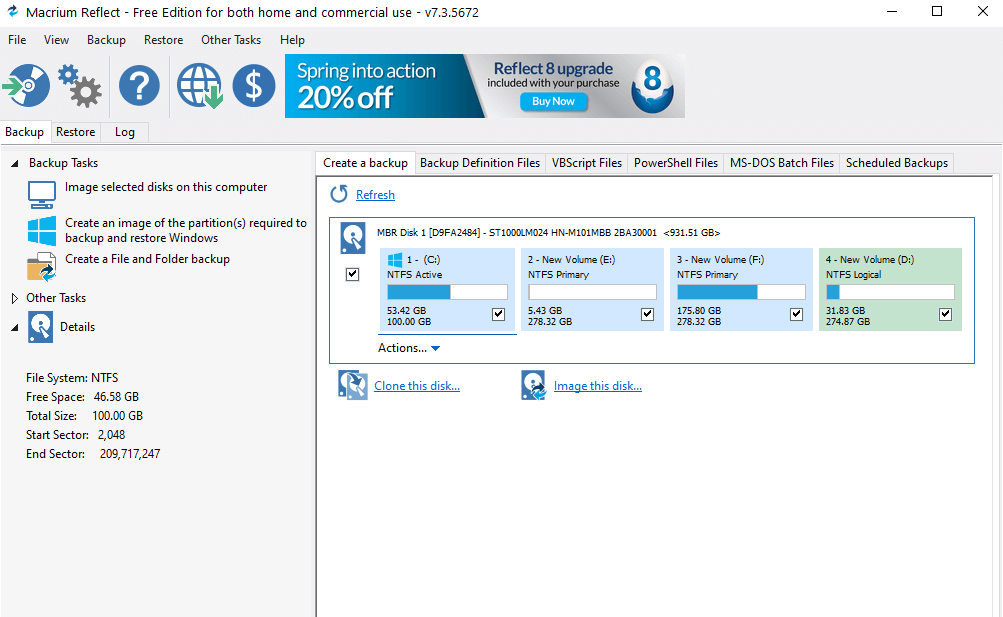

With one exception, which I’ll discuss shortly, my data lives in either OneDrive or Dropbox. It’s worth understanding how you can use OneDrive for nearly continuous backup. People underestimate the value of OneDrive. Honestly, if you stop reading here and simply do what I’ve done to this point, you’ll be in great shape. (I understand other backup utilities may have similar options.) Not only do I do my best to avoid any and all malware 2, but Reflect has an option called “Macrium Image Guardian” that locks down the generated backup images such that only Reflect can alter or delete them - they can’t even be deleted manually in Windows File Explorer, much less encrypted by ransomware. I often hear objections to the always-connected state relating to ransomware: there are variants of ransomware that can encrypt files on external drives. Backups happen whether I’m around or not, without my needing to lift a finger. The external drive, like the machine itself, is always on and always connected. The backups are configured to automatically delete the oldest backup files should the external drive run low on space.

The backup image files are stored in a sub-folder on my 6TB external drive. 1 This includes the recovery partitions as well as the partition containing my primary “C:” drive. Specifically, I configure Macrium Reflect to take full image backups of the primary hard drive once a month, with incremental backups every night.

My very basic backup, and the very first thing I installed when my new machine arrived, is essentially what I recommend everyone do: nightly image backups. Finally, once a month I download and/or export key online resources so they’re backed up as well. I also have a nightly script that copies certain collections of files among the machines here at home. I then use both OneDrive and Dropbox for nearly continuous backup of what I’m working on, as well as off-site storage and file sharing with my team. I start with nightly image backups using Macrium Reflect.


 0 kommentar(er)
0 kommentar(er)
